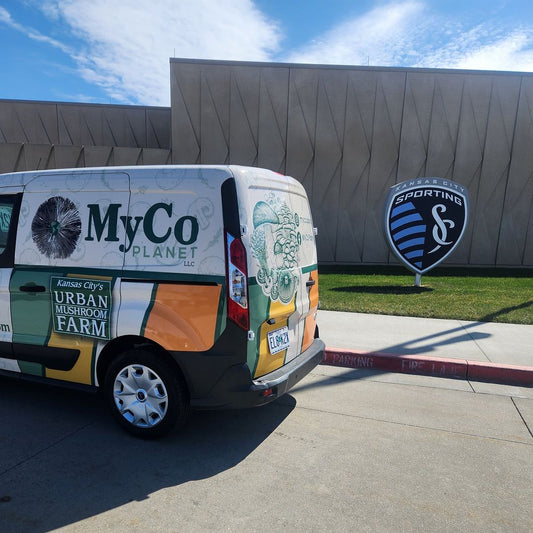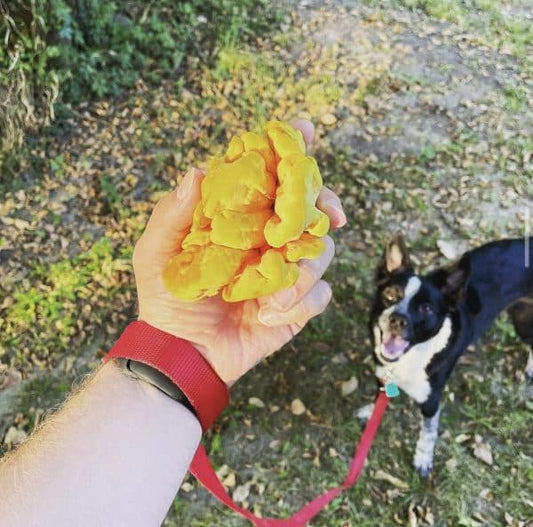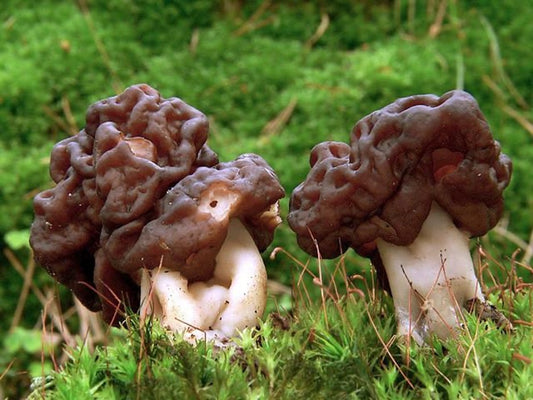Morel mushrooms are a highly sought-after delicacy among foragers and foodies alike. Found in Missouri, Kansas, and other regions of North America, these elusive fungi can be difficult to find and identify, but the rewards are well worth the effort. In this guide, we’ll explore the best ways to find, identify, and store morel mushrooms, as well as tips for mushroom foraging safety, preparing morels, sustainability considerations, legal considerations, and other popular mushroom varieties.
Finding Morel Mushrooms

Morel mushrooms grow in a variety of habitats, including deciduous forests, river bottoms, and areas that have recently been burned or disturbed. The key to finding morels is to look for the right conditions, such as warm temperatures and moist soil. In Missouri, morels typically start to appear in early spring, when ground temperatures reach around 50 degrees Fahrenheit. The season usually lasts from mid-March to early May, depending on weather conditions.
To find morels, start by looking for areas with dead or dying trees, particularly those that have recently fallen or been cut down. Morels tend to grow in areas where there is plenty of decaying organic matter, such as decomposing wood or leaf litter. They may also be found near streams or other bodies of water, where the soil is moist and rich in nutrients.
Identifying Morel Mushrooms
Morel mushrooms have a distinctive appearance that sets them apart from other types of fungi. They have a cone-shaped cap with a honeycomb-like texture, which can range in color from pale yellow to dark brown. The stem is usually hollow and light-colored, and the entire mushroom can range in size from a few inches to several inches tall.
It’s important to note that while morels are generally safe to eat, there are some poisonous lookalike mushrooms that can be harmful or even deadly. Some of these lookalikes include false morels, which have a wrinkled or brain-like cap and are usually reddish-brown in color. Other potential lookalikes include the deadly galerina mushroom, which has a small, brown cap and a ring around the stem.

To avoid mistakenly eating a poisonous mushroom, it’s important to be absolutely certain that you have correctly identified a morel before consuming it. If you’re unsure about the identification of a mushroom, it’s best to err on the side of caution and not consume it.
Types of Morel Mushrooms
In Missouri, there are four types of morels that are commonly found: the black morel (Morchella elata), the yellow morel (Morchella esculenta), the half-free morel (Morchella semilibera), and the early morel (Morchella angusticeps). The black morel, also known as the true morel, is the most common and has a cone-shaped cap with deep pits and ridges. The yellow morel, as its name suggests, has a yellow-brown cap with shallow pits and ridges. The half-free morel has a cone-shaped cap that is attached to the stem halfway down, and is typically found in the early part of the morel season. The early morel, as its name suggests, is one of the first morels to appear in the season and has a conical cap with short, shallow ridges. Each of these morels has its own unique characteristics and can be found in different areas and at different times during the morel season in Missouri.
Once you have successfully harvested morel mushrooms, it’s important to store them properly to ensure that they stay fresh and flavorful. Morels can be stored in a paper bag or a loosely covered container in the refrigerator for up to five days. For longer-term storage, they can be dried or frozen.
To dry morels, simply spread them out in a single layer on a baking sheet or wire rack and place them in a warm, dry location. They can take several days to fully dry, depending on the humidity level in your area. Once they are completely dry, store them in an airtight container in a cool, dark place.
To freeze morels, clean and slice them into bite-sized pieces, then spread them out in a single layer on a baking sheet and freeze them until solid. Once they are frozen, transfer them to an airtight container or freezer bag and store them in the freezer for up to six months.
Mushroom Foraging Safety
Foraging for wild mushrooms can be a fun and rewarding activity, but it’s important to take safety precautions to avoid accidental ingestion of poisonous mushrooms. Always consult a reliable mushroom identification guidebook or expert before consuming any wild mushrooms. Wear gloves and bring along a first aid kit in case of any mishaps. Avoid foraging near areas that have been treated with pesticides or other chemicals, and be mindful of other potential hazards, such as snakes or poison ivy.
Preparing Morel Mushrooms
Morel mushrooms have a unique flavor and texture that make them a favorite of many chefs and home cooks. They can be sautéed, roasted, or incorporated into sauces or soups. To prepare fresh morels, soak them in cold water for 10-15 minutes to remove any dirt or debris, then rinse thoroughly and pat dry. From there, the possibilities are endless! Consider trying them in a cream sauce over pasta, sautéed with butter and garlic, or stuffed with cheese and baked.
Sustainability Considerations
As more people become interested in foraging for wild mushrooms, it’s important to consider the impact on the environment. Always be mindful of sustainable foraging practices, such as only harvesting a small portion of the mushrooms you find and leaving some behind to propagate. Consider bringing along a reusable container or bag to collect mushrooms, rather than disposable plastic bags. And always respect private property and obtain permission before foraging on someone else’s land.
Legal Considerations
Depending on where you’re foraging for mushrooms, there may be legal considerations to keep in mind. In Missouri, for example, a permit is required to harvest mushrooms on state-owned land. Always check local regulations and obtain any necessary permits before foraging.
Other Popular Mushroom Varieties

While morels are certainly a prized find for mushroom foragers, there are many other varieties of edible and medicinal mushrooms to discover. Some other popular mushroom species found in Missouri and other regions of North America include chanterelles, oyster mushrooms, and hen-of-the-woods (maitake) mushrooms. Each of these species has its own unique flavor and texture, and can be used in a variety of culinary dishes.
Cultivating Morel Mushrooms
Morels thrive in soil that is rich in organic matter and has good drainage. They prefer soil that is moist but not waterlogged, and they are often found in areas with a slightly acidic pH. If you are planning to cultivate morels, it’s important to prepare your soil properly to create the ideal growing conditions.
Start by clearing the area of any debris or vegetation, and then loosen the soil to a depth of about six inches. Mix in plenty of compost or other organic matter, as well as a soil amendment such as gypsum or lime if necessary to adjust the pH. Morels also benefit from a layer of mulch on top of the soil to help retain moisture.
It’s important to note that morels are notoriously difficult to cultivate, and even experienced mushroom growers may have difficulty getting them to fruit. If you’re interested in cultivating morels, it’s recommended that you start with a small test patch and carefully monitor the soil conditions and environmental factors to maximize your chances of success.
Conclusion
Foraging for morel mushrooms can be a fun and rewarding activity for those who love the outdoors and enjoy culinary adventures. However, it’s important to approach mushroom foraging with caution and respect for the environment. Remember to consult a reliable mushroom identification guidebook or expert, take safety precautions, and consider sustainability and legal considerations. With a little patience and practice, you may just find yourself with a basket full of delicious morels to enjoy.



